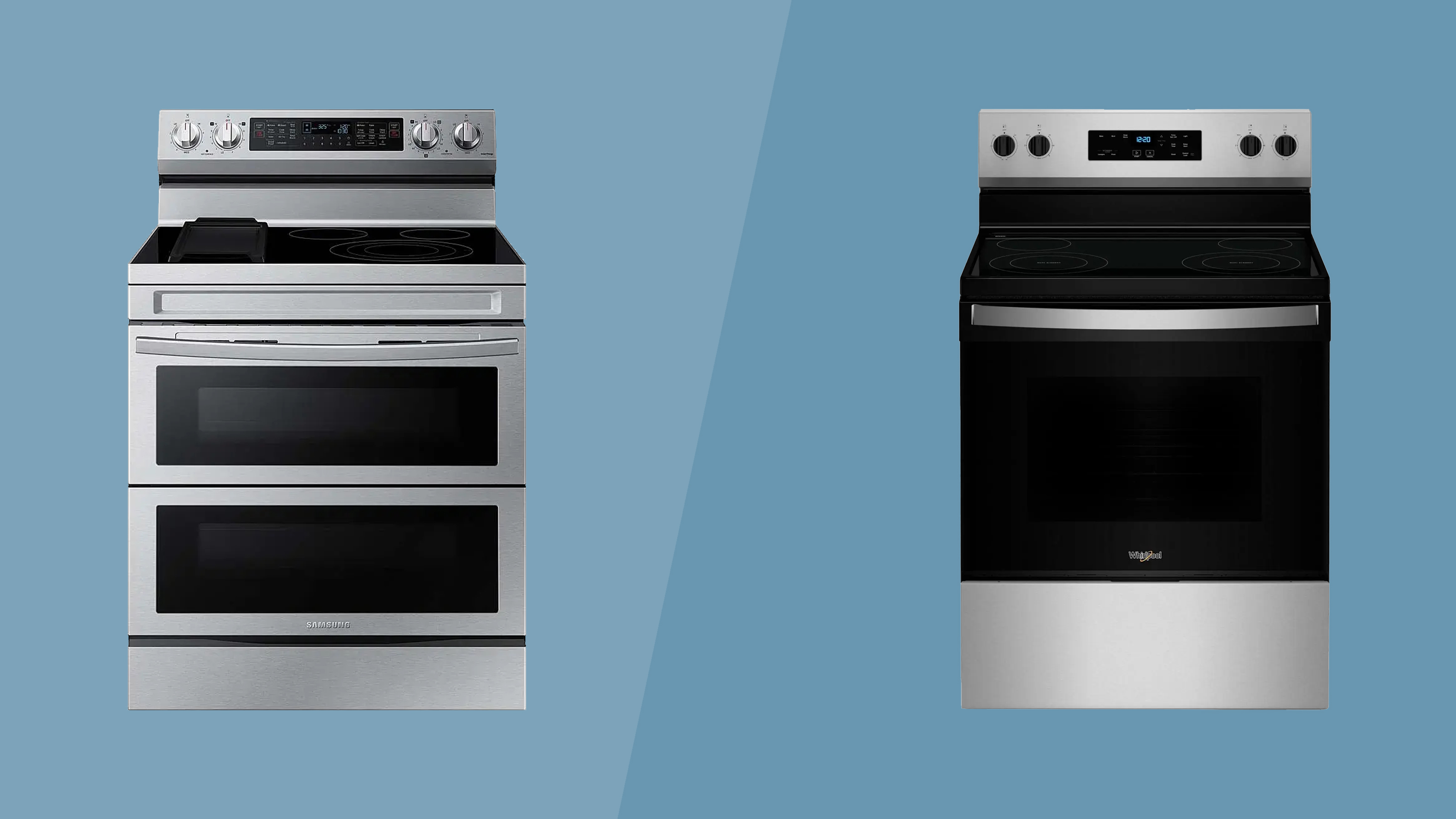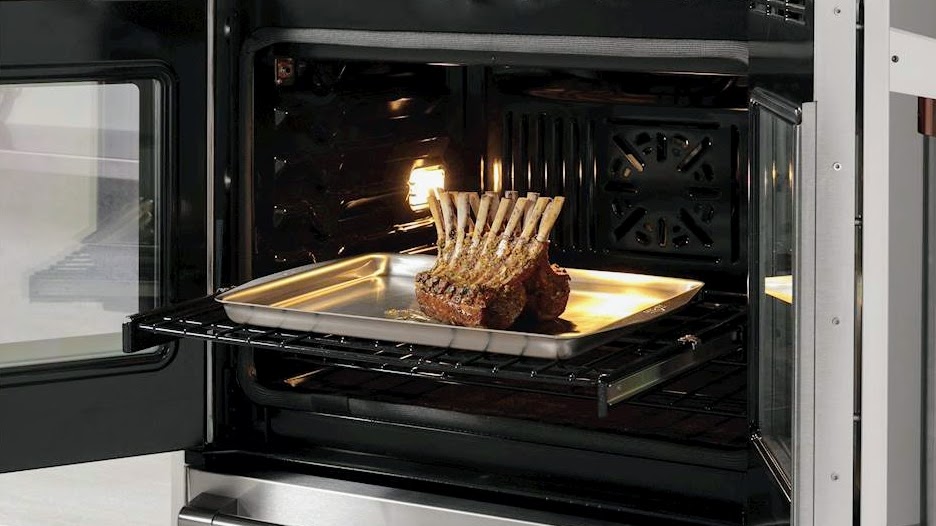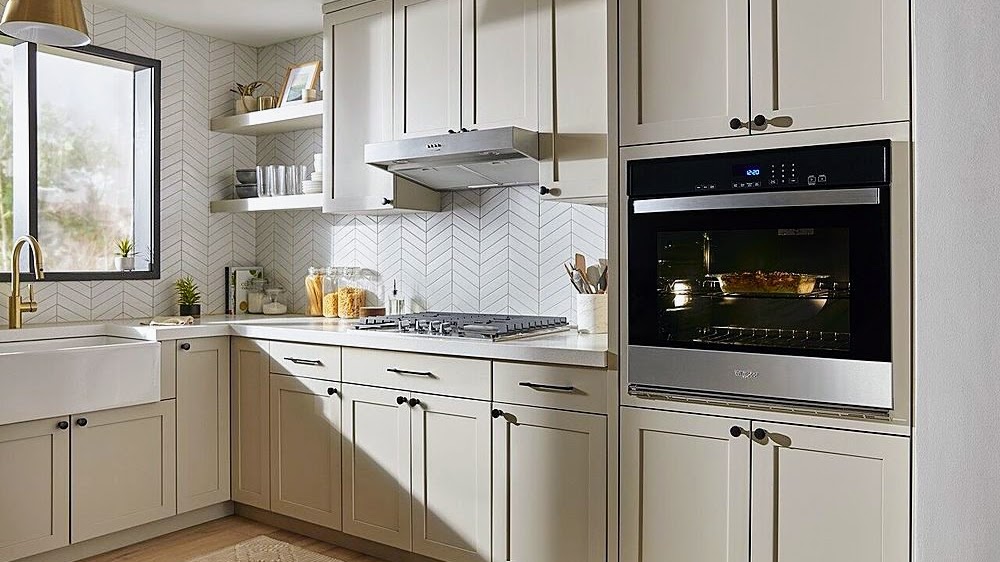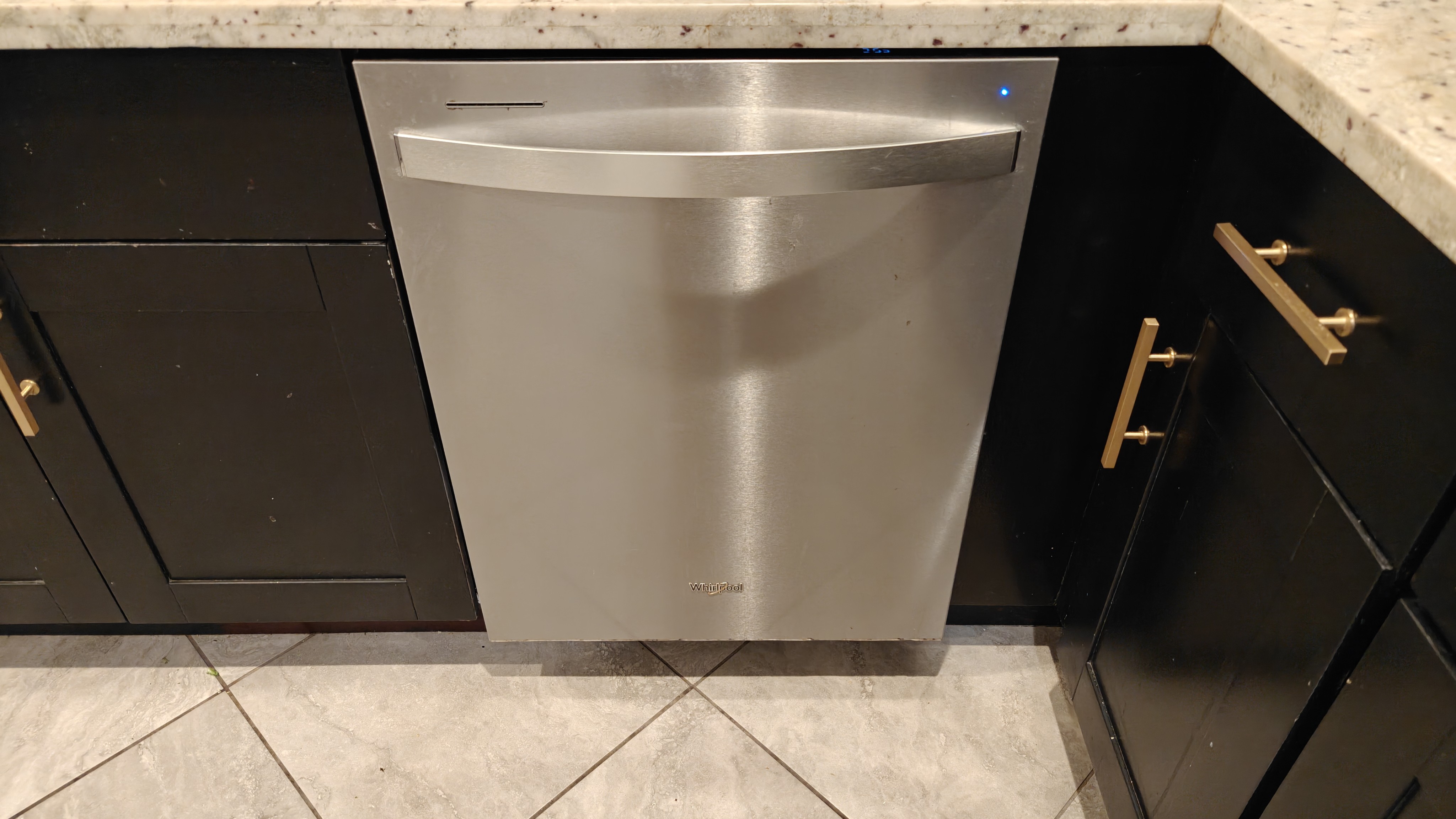Convection oven vs regular oven: which is right for you?
Which type of oven is the right fit for your kitchen needs and budget?

In the world of ovens, there are two distinct camps – convection ovens and regular, or conventional, ovens. Yes, there are variations within each, but most of today's appliances fall under one of these two umbrellas.
Many of us, when searching for the best oven, consider size, price, and looks before the technology inside, acting on the assumption that all ovens largely work the same way. Yet the technology inside plays a role in not only how well it works but also how well it works for you.
Regular ovens heat the air using heating elements at the top and bottom of the cavity. Fan-assisted, regular ovens move this hot air around, while true convection ovens have an additional element that helps the oven maintain a more consistent temperature.
Depending on what you're cooking, these differing heating methods create different results. Whether you’re aiming for golden, crispy roast potatoes or a perfectly risen soufflé, whether you’re a busy parent looking to save time on weeknights or a passionate and precise baker, convection and regular ovens come in various models and price points, making the choice even more complicated.
To make things easier, this guide will explain the key differences, pros and cons, and what to consider when choosing your next oven. We also spoke to Sarah Whitfield, Product Manager at Stoves, and Gino Grossi, Head of Brand Marketing for Digital Appliances at Samsung UK, to get their expert insights.
Convection oven vs regular oven: Price and value
Prices vary between convection and regular ovens due to the difference in their technologies. Technically, any oven with a fan can be considered a convection oven, but for the purpose of this article, we'll focus on comparing true convection ovens vs. regular ovens with and without fan assistance.
True convection ovens tend to have more advanced technology, including the extra heating element, integrated fans, and precise temperature controls. This means they often come with a higher initial price, but you save money over time because of their improved energy efficiency. Regular ovens are more basic in their design, making them cheaper.
Sign up to receive the latest news, reviews, buying guides and deals direct to your inbox
For a decent, regular oven, you should pay around $500-$700 for models such as Insignia, GE's, or Amana's Freestanding range cookers. Each comes with dual heating elements, cooktops, and basic temperature controls. With fewer moving parts, regular ovens like these are reliable and cost-effective, ideal for basic baking and roasting tasks. They also last surprisingly well, considering their lower price.
Regular wall ovens are more expensive, starting at around $1,000 for models like the Summit Appliance Single Electric Oven but averaging around the $1,500-$1,700 mark for ovens such as those from Whirlpool and Samsung. This extra cost is because their built-in nature requires more advanced circulation and heating features to protect the units surrounding them.
In terms of convection ovens, you can pay as much as $8,000-$9,000 for a true convection wall oven such as the Viking Professional 7 Series or as little as $900-$1,000 for the Samsung Freestanding range. However, you must spend around $2,000-$2,500 to balance value and features. This will get you models such as the Frigidaire Gallery, 24" Single Gas Wall Oven with Air Fry from our best oven list.
While convection ovens generally come with a higher price tag, they can save energy costs over time, thanks to faster cooking times and lower temperature needs. On the other hand, regular ovens often provide a simpler, more traditional cooking experience at a lower initial cost. They are reliable if you value consistency without bells and whistles.
Convection oven vs regular oven: Features and functions
While convection and regular ovens may look similar, their unique heating methods require different features and functions, leading to differing cooking results.
“In conventional ovens, the heating elements heat the air inside the oven cavity and maintain a set temperature using a thermostat," said Whitfield. "However, since heat rises, the air inside the oven can vary at the top and bottom, which can lead to ‘hotspots’ and temperature disparities throughout the cavity.
"Convection ovens, on the other hand, include a fan in addition to the typical heating element, which circulates the hot air throughout the oven and equalizes the temperature, creating even heat throughout. This consistent temperature means that no matter which shelf you place your food on, you can expect even results from top to bottom and edge to edge."
With regular ovens, you need to ensure you're pre-heating your oven for the most even heat, and you may need to check and rotate dishes while cooking. On the plus side, this allows you to place different dishes at varying levels in the oven to make the most of browning at the top or gentle heat on the lower shelves.

Sarah Whitfield has spent her career specializing in products for leading appliance brands. She is currently Product Manager at Stoves, a British appliance specialist that uses decades of design and engineering experience to build leading home cookers and ovens.
Beyond the differences in heating technologies, true convection ovens offer a slightly wider range of features and functions. This is because the convection technology provides more scope for this, and their higher price point means consumers expect more.
They typically offer more precise temperature settings, for example, and this requires more precise controls made possible through digital or touchscreen displays. Thanks to adding a third heating element, many convection ovens explicitly reference having an Air Fry option. Stoves offer a TrueTemp digital thermostat on its mid- to high-range models, which constantly takes exact temperature readings to keep the cavity at a more consistent setting.
Other models, such as the Frigidaire example above and the KitchenAid Twelix Artisan, come with steam options. With Frigidaire's Steam Bake, steam circulates through the cavity to help make bread and muffins light and fluffy and to help them rise higher.
The Twelix Artisan takes this further by offering three cooking methods: Twelix convection, forced air with steam, and pure steam. It also has an integrated temperature probe to monitor the food’s core temperature, plus a Cool Door and child lock functions for added safety.

“Recent advancements in smart home technology have helped put the oven at the center of the smart home, and some ovens even can recognize what food is being put in the cavity and then adjust the cooking program accordingly," said Grossi. “For convection ovens, you should always look for features like multiple fan settings, the inclusion of an additional heating element, and interiors that are easy to clean."
This doesn't mean regular ovens don't offer additional features or have precise controls. If you buy a range cooker, you get the added benefit of a hob included in the price. Regular wall ovens also add additional benefits, such as self-cleaning modes in the Whirlpool model and even Wi-Fi controls in the Samsung version.
“When it comes to regular ovens, must-have features include self-cleaning options, multiple rack positions, and temperature controls for versatile and efficient cooking," said Grossi.

Gino Grossi is the Head of Brand Marketing for Digital Appliances at Samsung UK. Samsung Electronics strives to deliver innovative products and experiences that maximize user convenience and make consumer lives better.
Convection oven vs regular oven: Performance
Convection ovens deliver fast and consistent results when it comes to performance.
“The increased, constant flow of hot air throughout a convection oven means that they reach the desired temperature at a faster rate, cooking food considerably quicker and at lower temperatures than in a conventional oven, therefore being more energy-efficient and helping to reduce the cooking time by approximately 25%," explained Whitfield.
"Additionally, convection ovens provide more even browning and crisping, making for the perfect roast chicken," added Grossi.
Regular ovens still shine in specific use cases, though. For recipes that require slow, even baking or those that depend on a gentle crust formation, a regular oven can offer a more traditional and forgiving cooking experience.
“If you’re a keen baker, a conventional oven may be better as recipes that require a delicate rise – such as soufflés or pastries – need less intense heat not to disturb the mixture," continued Whitfield. This is especially true in regular ovens that don't use a fan. The absence of fan-driven air circulation allows for the most controlled rise, resulting in a more defined texture.
What's more, for all the added speed of convection ovens, air circulation can lead to what's known as "flavor bleeding." This is when the flavor of one food passes onto another if they're both cooked in the oven simultaneously.
"Flavor bleeding, especially between sweet and savory dishes when cooked simultaneously, is more likely with convection ovens due to the constant motion of air coming into contact with each dish," said Whitfield.
"To avoid this, consider covering each dish with tinfoil." Alternatively, some advanced ovens offer solutions, such as Stoves’ Equiflow technology, which draws fanned air in and distributes it through strategically placed vents to create a "flavor-safe environment."

Convection oven vs regular oven: Which is best?
Reviews
Whirlpool 24" Stainless Steel AI Dishwasher Review
Napoleon TravelQ PRO285 Portable Gas Grill review
Dreame L40 Ultra Robot Vacuum Cleaner and Mop review: almost hands-free cleaning
GE Profile Smart Mixer with Auto Sense review: a powerful, thorough mixer
Echo eForce DPB-2500 review: a leaf blower as a snow removal tool?
DPAS-2100 + Pro Paddle Attachment review: a new way to remove snow this winter?
Midea MAD53109APK 5.5QT Air Fryer review: a small, simple, and highly effective option
Eureka J15 Pro Ultra Robot Vacuum review: hands-free cleaning for busy families
Choosing between a convection oven and a regular oven depends on what and how you like to cook. Convection ovens use a fan to circulate hot air, cooking food faster and more evenly. They’re great for roasting, baking multiple trays, and saving time, with some models cutting cooking times by as much as a quarter. A convection oven is a solid choice if you want crispy roast potatoes or perfectly baked cookies on every shelf.
On the other hand, regular ovens use heat from the top and bottom elements without a fan. This makes them better for baking delicate treats like soufflés or pastries, where gentle, steady heat helps them rise perfectly. A regular oven could be a better fit if you mainly bake or prefer a more traditional cooking style. Ultimately, it’s about choosing the best for your cooking routine and lifestyle.
Convection oven vs regular oven: What the Experts Say
There’s a perception that convection ovens win every time, but this isn’t always true, according to Grossi. The reality is that choosing the right oven depends on what kind of cook you are. Before purchasing, it's worth thinking about what you enjoy cooking and what features are most useful to you.
Grossi continued that another common misconception is that convection ovens dry out food, but with proper temperature adjustments, this can also be prevented.
Grossi also explained some techniques for getting the most out of convection ovens. To avoid overcooking, it’s generally recommended to lower the temperature by 25 F, for example, or reduce the cooking time by about 25%.
Using low-sided pans is also helpful, as they allow better air circulation around the food. Additionally, rotating baking sheets halfway through the cooking process will help keep browning even.
Convection oven vs regular oven: FAQs
Which oven is more energy-efficient?
The true energy efficiency ratings depend on the model you choose, but generally speaking, convection ovens are more energy-efficient because they use about 20% less energy. This efficiency is due to the faster cooking times and lower temperatures needed for the same results.
By contrast, regular ovens can require more time and higher temperatures, which can increase energy usage. However, they come with fewer bells and whistles, such as digital displays and thermostats, which can help reduce this usage, albeit slightly.
What are the maintenance differences between the two oven types?
The maintenance requirements for convection and regular ovens differ primarily because of the presence of a fan, or fans, in convection ovens. If the fans accumulate grease or debris, the oven’s ability to distribute heat evenly can be limited, leading to less consistent cooking results. Over time, the fan may also require occasional maintenance or replacement due to wear and tear.
By contrast, regular ovens are simpler in design and have fewer components that need regular upkeep. Since they don’t rely on a fan, maintenance typically focuses on keeping the interior cavity, racks, and heating elements clean. Some regular ovens come with self-cleaning features, which can help reduce this effort.

Victoria Woollaston, with nearly 20 years of experience, has reviewed gadgets, beauty tech, and household appliances for WIRED, TechRadar, and Expert Reviews. She specializes in critiquing coffee makers and small appliances for Top Ten Reviews. Victoria is also the founder and editor of inclusive beauty and grooming sites mamabella and MBman.
